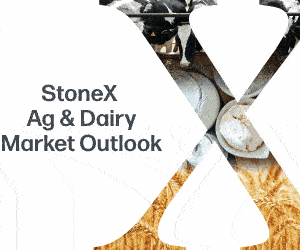 |
|||

|
 |

|
|
Guest Columns
Perspective:
Export Expertise
China outlook remains strong
Brad Gehrke
Brad Gehrke is director of global trade analysis for the U.S. Dairy Export Council. He contributes this column exclusively for Cheese Market News®.
In April, the International Monetary Fund reduced its 2015 economic growth forecast for China to 7.3 percent. Should that come to pass, it would be China’s lowest annual growth rate since 1990 — a 25-year period when the country’s economy gained an average of 10 percent annually.
That forecast, coupled with heavy investment in domestic Chinese milk production and signs that Chinese dairy import growth has slowed over the past couple months, has some dairy suppliers wondering if they need to worry about China’s dairy buying future. The quick answer is no.
China’s dairy appetite continues to be robust. A drop in economic growth rate does not equate to sliding consumer incomes nor a change in long-term projections for middle class expansion, urbanization or overall population gains — the major drivers of the nation’s growing dairy appetite. And major investments in domestic dairy farms do not mean China will become capable of satisfying that growing appetite.
To start, the growth rate of gross domestic product (GDP) can be a misleading benchmark with which to estimate China’s dairy consumption and import trends. The nation’s GDP growth rate is slowing, but because the base has increased, the absolute increase per capita or per household is still greater than when China’s economy was soaring.
In other words, a 10 percent increase on China’s per capita income five years ago (about $3,404 in current dollars) meant an additional $340 in a consumer’s pocket. A 7 percent increase on 2013 per capita GDP (about $6,747) means an extra $470 in a consumer’s pocket.
China’s economy is not trouble free. Continuing its shift from a primarily export-oriented economy to one based more on internal consumption requires difficult tax, fiscal, business and banking reforms. Still, Chinese consumers as a whole are doing well despite what the numbers might imply. And the International Monetary Fund projects quicker absolute per capita income growth through 2018 than during the heyday of double-digit economic expansion.
In addition, China’s population is poised to increase more quickly than originally expected. At its current growth rate, China is on track to add 16 million newborns in 2014.
But last year, China relaxed its one-child policy, allowing certain families to have a second child. The change may not result in the immediate boom in population and consumption that some analysts project, but it could, conservatively, add another 700,000 mouths to feed per year, and by other estimates 2 million mouths.
Dairy consumption growth is expected to remain strong. The International Farm Comparison Network projected Chinese dairy demand would increase from 43 million metric tons liquid milk equivalent to 61 million metric tons, a 42 percent increase, by 2024. That’s an increased appetite for about 40 billion pounds of milk, equivalent to nearly all the milk produced in New Zealand each year.
Domestic supply growth will meet a portion of that need but not nearly all. While analysts vary as to the precise volume of imports needed to meet demand, they agree it will be sizable — a minimum of 8-10 million metric tons (18-22 billion pounds) milk equivalent above current import levels.
Imports will remain key to feeding the additional mouths, despite hundreds of millions being spent to build bigger, more efficient dairy farms.
Keep in mind two factors when contemplating Chinese dairy farm investment:
1) China is still transitioning away from small-scale farms, and their retirement will continue to take the edge off the growth of large-scale operations. It will be years before these large farms are up and running at full capacity and efficiency and become the country’s dominant milk producers — and even then, China is not likely to ever become self-sufficient.
2) The costs of producing milk in China are high. Arable land accounts for less than 14 percent of China’s total area and according to a report released earlier this year, nearly one-fifth of that land was too polluted to farm. The country has grown reliant on costly imported feed. Environmental factors and resource limitations will constrain China’s overall milk output growth, ensuring that China likely does not become a low-cost producer and keeping imports price competitive.
The concern over China’s future is understandable. As the world’s biggest single dairy buyer accounting for around 16 percent of import volume last year, China’s market clout is unmatched. No doubt there will be ups and downs in its buying patterns. But while purchasing may vary month to month and even quarter to quarter, the long-term outlook remains very positive indeed.
CMN
Note: The U.S. Dairy Export Council is primarily supported by Dairy Management Inc. (DMI) through the producer checkoff that builds on collaborative industry partnerships with processors, trading companies and others to build global demand for U.S. dairy products.
CMN
The views expressed by CMN’s guest columnists are their own opinions and do not necessarily reflect those of Cheese Market News®.
| CMN article search |

|
© 2025 Cheese Market News • Quarne Publishing, LLC • Legal Information • Online Privacy Policy • Terms and Conditions
Cheese Market News • Business/Advertising Office: P.O. Box 628254 • Middleton, WI 53562 • 608/831-6002
Cheese Market News • Editorial Office: 5315 Wall Street, Suite 100 • Madison, WI 53718 • 608/288-9090